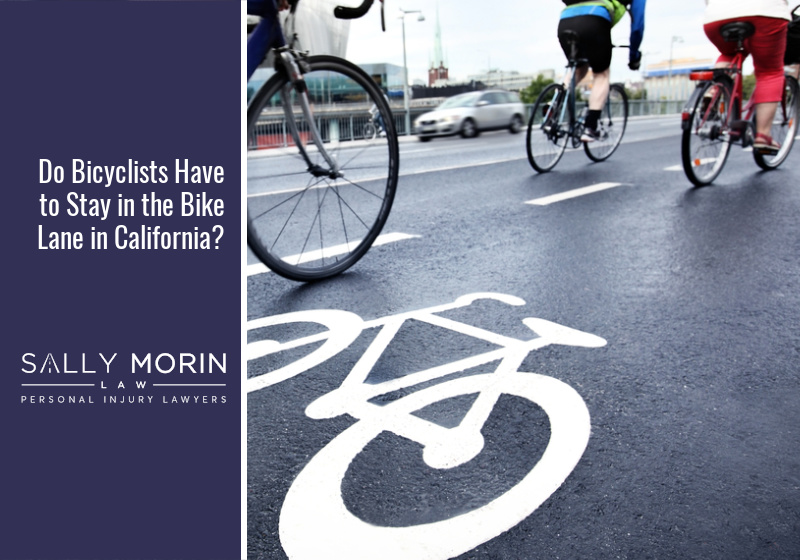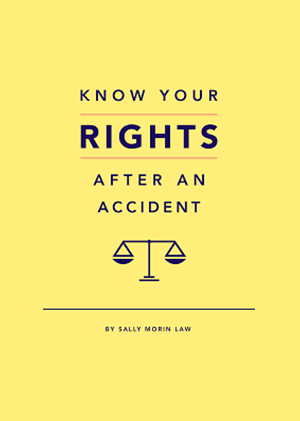Do Bicyclists Have to Stay in the Bike Lane in California?
If you’re a California cyclist, you’ve probably had a motorist yell at you to “Get in the bike lane!” But do they know what they’re talking about? Do you really have to stay in the bike lane?
This is a common question that arises in bicycle injury cases. People are often confused about whether California law requires bicyclists to travel in bike lanes and how this could impact a bicycle accident claim.
Let’s take a look at bike lanes from a legal point of view, including reviewing the California Vehicle Code rules about whether cyclists have to use them.
What California Law Says About Bike Lanes
California has many bike-friendly laws. The goal is to protect cyclists and prevent them from being hurt while riding, which is why using the bike lane isn’t always the best option.
Under CVC 21208, a cyclist doesn’t have to stay in a bike lane if there’s a hazard in their path, when they’re turning, when they’re passing, or while traveling in a construction zone. As long as the cyclist can keep up with traffic and ride safely, they are permitted to enter the lane of vehicle travel if it’s safest for them to do so.
That’s why California motorists should always keep an eye out for bicyclists in nearby bike lanes who may need to move toward them in the roadway. Even when there’s no bike lane, cyclists don’t have to stay along the right-hand edge of the road at all times or “ride the curb.”
They can, in fact, ride legally right in the center of the traffic lane. When preparing to pass or turn, or when riding in a one-way street, cyclists can move to the center of the lane under CVC 21202. They can also do so whenever “reasonably necessary to avoid conditions that make it unsafe to continue along the right-hand curb or edge.”
Situations Where Cyclists Can Legally Leave Bike Lanes
To further clarify when cyclists can legally move out of bike lanes, let’s look at some examples. Below are common situations where a motorist and cyclist might disagree about what happened, but the law is likely on the cyclist’s side.
Avoiding Potholes
Imagine that a cyclist can see a pothole ahead that’s going to make the bike lane dangerous. At this point, they are legally permitted to merge out of the bike lane and into the lane of vehicle traffic to safely avoid the pothole.
Near Construction Sites and Debris
As the roadway approaches a construction site, a bicyclist can see that their path of travel is obstructed by orange cones, construction barriers, or construction debris littering their path. They can legally move into the motorists’ lane of travel to pass the construction site.
Around Parked and Double-Parked Vehicles
The cyclist is approaching an area that has numerous parked or double-parked cars obstructing the bike lane or right-hand side of the road. It’s their legal right to move into the main lane of vehicle travel to avoid hitting a car or being doored.
When Passing Slower Traffic
Let’s say the cyclist is approaching a slower cyclist or scooter rider and needs to overtake them. Under California bike law CVC 21202, they can move to the main lane of travel to pass slower traffic.
These are just a few of the situations where cyclists can legally ride outside bike lanes. If you’re unsure about the legal issues regarding a specific bicycle or traffic injury, you can request a free legal consultation for more information.
Injured Cyclists, You Have Rights!
Motorists tend to dislike the rules listed above because it means they have to respect cyclists’ rights to share the road. The law requires everyone to stay vigilant and patient, which isn’t always easy!
If someone hurts you in a bike lane accident, Sally Morin Personal Injury Lawyers are here to help. We truly care about protecting cyclists’ rights! Call (415) 413-0033 or get a FREE online case evaluation now.
We Handle Your Accident Claim so You Can Focus on Your Life
After a personal injury, contact the attorneys at Sally Morin Personal Injury Lawyers. We handle many areas of the law, including bicycle injuries. We believe you should be able to focus on recovering while we handle the legal details. We truly care about the people of California. Contact us today for a free online case evaluation.











